Creating a bit of a stink

This week: Catapulted into summer; Work routine; Protecting tender plants; Creating a bit of a stink;
Catapulted into summer
By the end of last week, as the mercury was a fraction over 30ºC, I decided it was time to give up outside work after 10am.
What did it for me were my felines who are now in “full summer” mode. Callie spends most of the day asleep, perched high up on a roof beam under the patio canopy where she enjoys the warm morning sun, but then the cool breeze as the sun approaches it’s mid-day zenith.
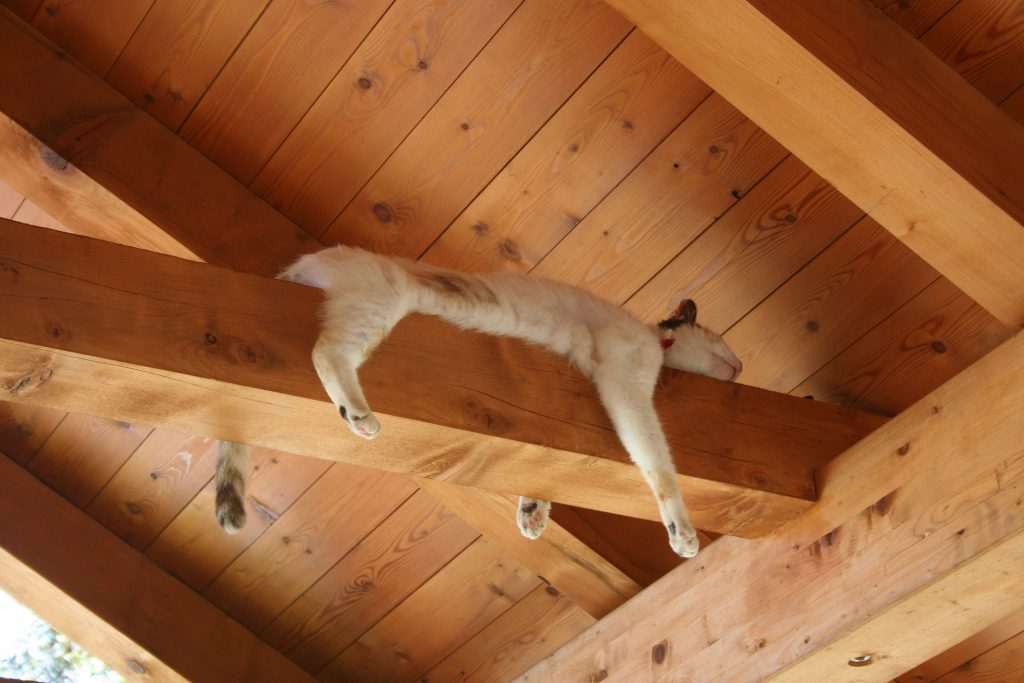
Senior cat Risha, prefers a less energetic repose, on cool concrete – apart from when he hears the coffee machine, his cue for another mouse sized snack.
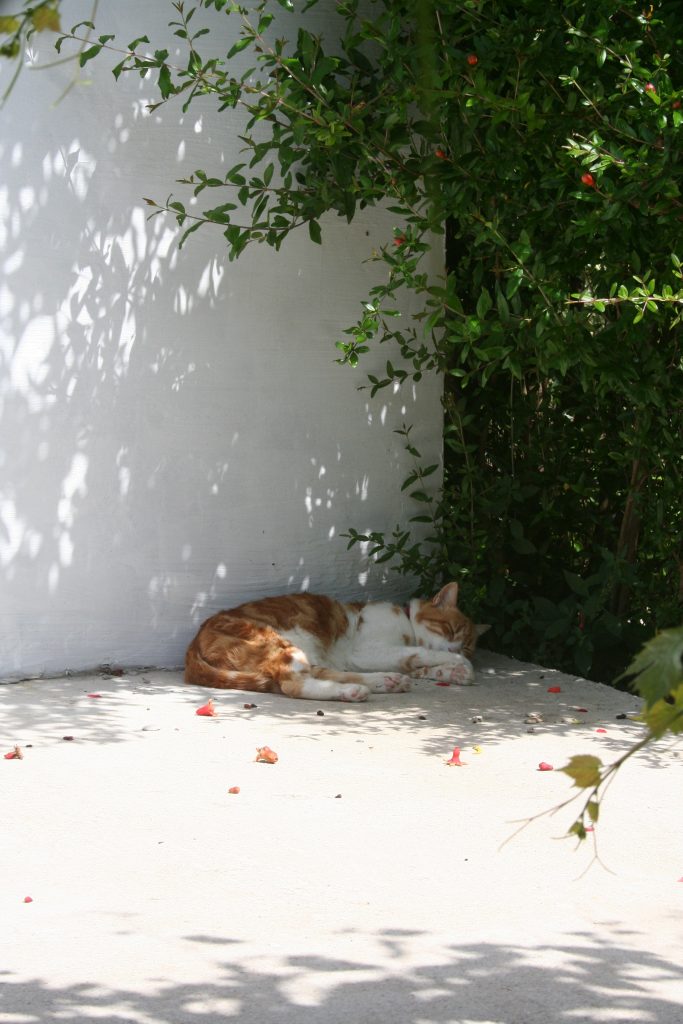
I do of course offer them both coffee, my sweet scented Copán from Honduras – nothing but the best here – but they demur. May be I should just get some Nescafe….
The graph of the temperature change in just a fortnight shows the considerable difference we have experienced in just a few days. I am now in a full daily irrigation cycle, keeping alive the shrubs I planted in the spring and the recently planted saplings.

Everything is growing, with new shoots visible which suggest I have got my planting locations about right. New additions have been potted on and are being acclimatised to the Mediterranean summer before being planted in their permanent positions.

Thanks to everyone who responded to the unfortunate incident with my car wheel’s departure. I was sent a photo with the comment that it could have been worse, I could have found a CAT on top of my car.

Which does remind me of my time in Abu Dhabi, when a neighbour amongst various vehicles had two Lamborghini – one metallic white, the other yellow – I mean you can never have too many Lamborghini can you?
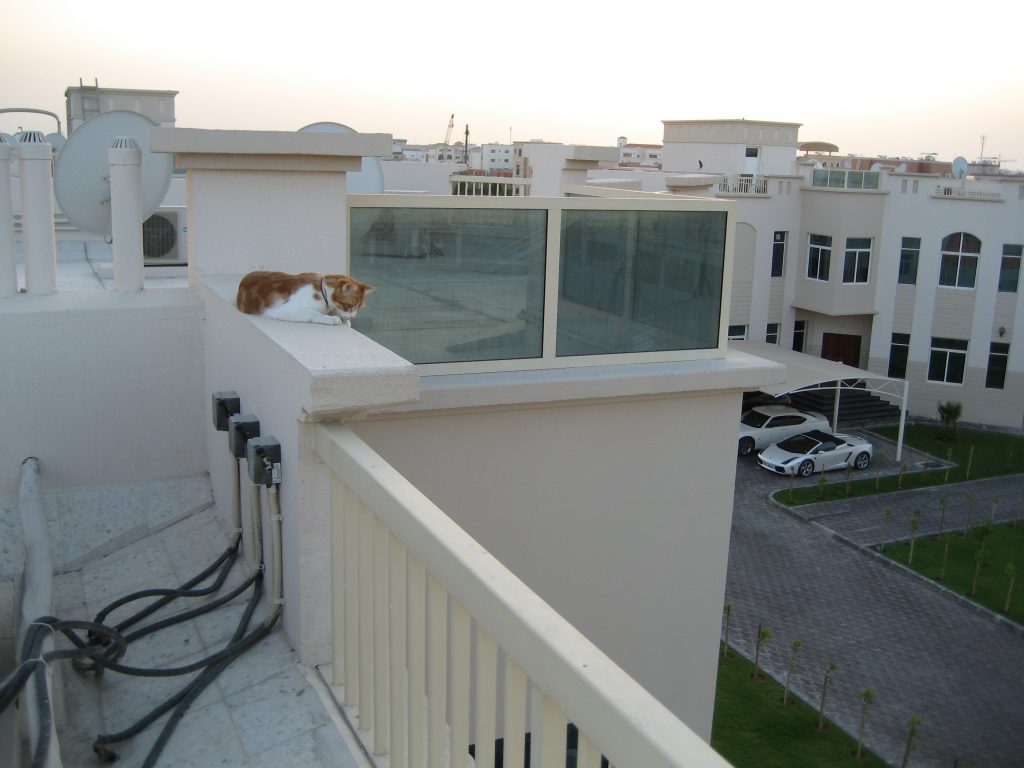
Both had vinyl roofs and I found Risha one morning sharpening his claws on the roof of the yellow one. “Risha, get off NOW!”
The owner never even noticed…
Work routine
Dawn breaks early here, by that I mean around 04:00. By five it is full daylight and were it not for the hills to the east between Dol and Verbanj, we would be in sunshine. By a quarter to six the morning sun is flooding through my windows.
The Tiger mosquitoes are back and biting, so first job is to apply a layer of pleasant ginger smelling repellent cream to all exposed flesh and then I ventured forth into the orchard on Monday morning.
My neighbours depart for their olives and grapes around the same time. I am determined to make some progress on the ornamental pond this week, but hard work needs to be undertaken in the cool of the day.
It wasn’t long before I was bitten on the arm by a hungry mosquito. There must have been a small square of skin where I didn’t apply the cream and these insects are highly adept at finding it. So it was inside to rub the reddening swelling with Anthisan cream.
It’s better not to be bitten, but when that happens, then a quick application of an emollient soothes the pain. These are the annoying invasive species that arrived on banana imports some years ago, which have now spread around the Mediterranean. This year they seem to be larger than ever too.
Whilst in some areas, the south of France for example, there are government programmes to reduce or eradicate the menace, no such initiative exists here. You just buy you protection at the pharmacy and swat as many as you can.
By 9am the sun is up high, the temperature is 28º going on 30º and I have made some progress – cutting down more weeds on the periphery of the flat area where the pond will go.
There is no shortage of indoor jobs, but I feel torn. I’d like to be outside in the sunshine, but in the sun it is way too hot, so I settle for jobs in the shade and get bitten. Then by afternoon, I join the felines in that staple of summer Mediterranean life, a siesta, followed by irrigation of the plants, shrubs and trees.
As the sun lowers in the milky blue sky, I seek a shady corner of an orchard to do some work in, then catch up on emails and correspondence and retire early with a good book.
Protecting tender plants
The UV sensor on my weather station has been reading 10 this week. Not surprising, we are little more than a week from the northern summer solstice, so with the sun almost vertically overhead, there is a lot of solar radiation.
My plantings take account of the needs of the plants. When I get a new plant or shrub I research the soil conditions it needs.
Being an alkaline soil, much as I would like to have some acid loving plants, like blueberries, there is no point as they simply will not grow. I have two blueberry plants in pots, but they hardly thrive even in ericaceous compost, top dressed with pine bark and needles.
My tap water is hard too, and I think this nullifies the acid soil and compost.
Then there is the aspect. Two orchards are flat, but with a north facing forested up slope behind. They are protected from the cold north winds by buildings but are in full sun from dawn to dusk in summer, and barely receive any sun in winter when shadows are at their longest.
The Top Orchard is east west facing, with a tall stone wall along the northern boundary. This provides ample protection and heat in winter and is a “heat island” in summer, feeling hot to the touch after prolonged exposure to the sun.
A number of the shrubs I planted in the spring seem to have taken well to their new homes. Placed in the border bed, they receive full sun from late morning to late afternoon, but they were chosen because they thrive in full sun.
One Fuchsia I planted a few weeks ago was starting to adapt but then with this heat, even with irrigation, I saw the leaves were getting singed, so I fabricated a paper cover to protect it until it is fully established.
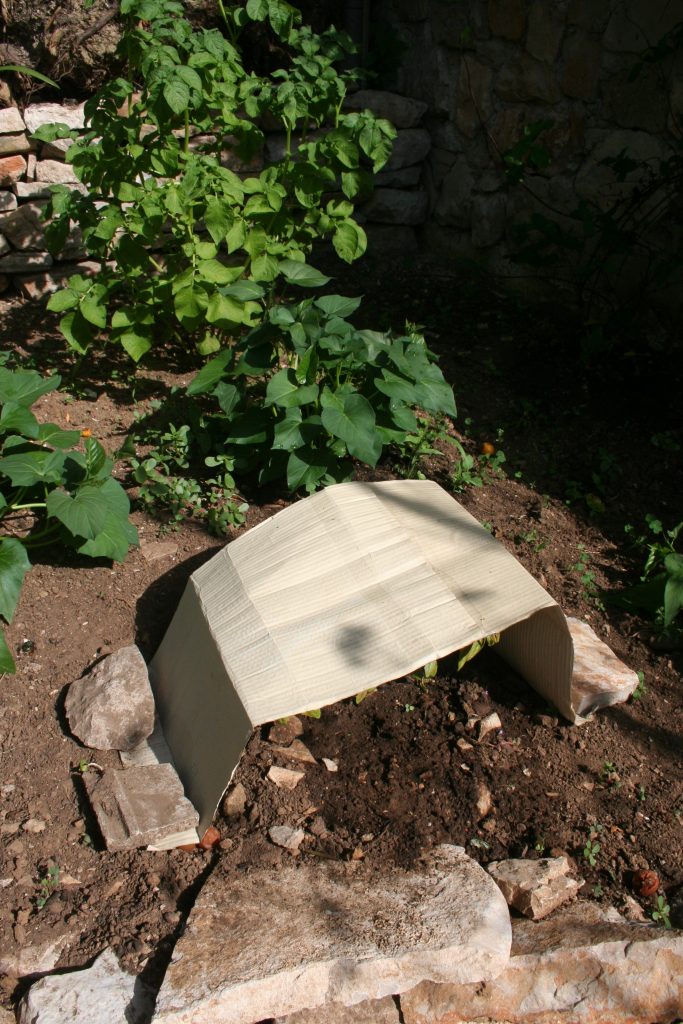
In the Citrus orchard, a Grapefruit I planted two years ago is surviving, just, but was clearly not happy in the full sun, so this week I used one of the winter covers, fixed over the frame, to protect it from the midday sun.
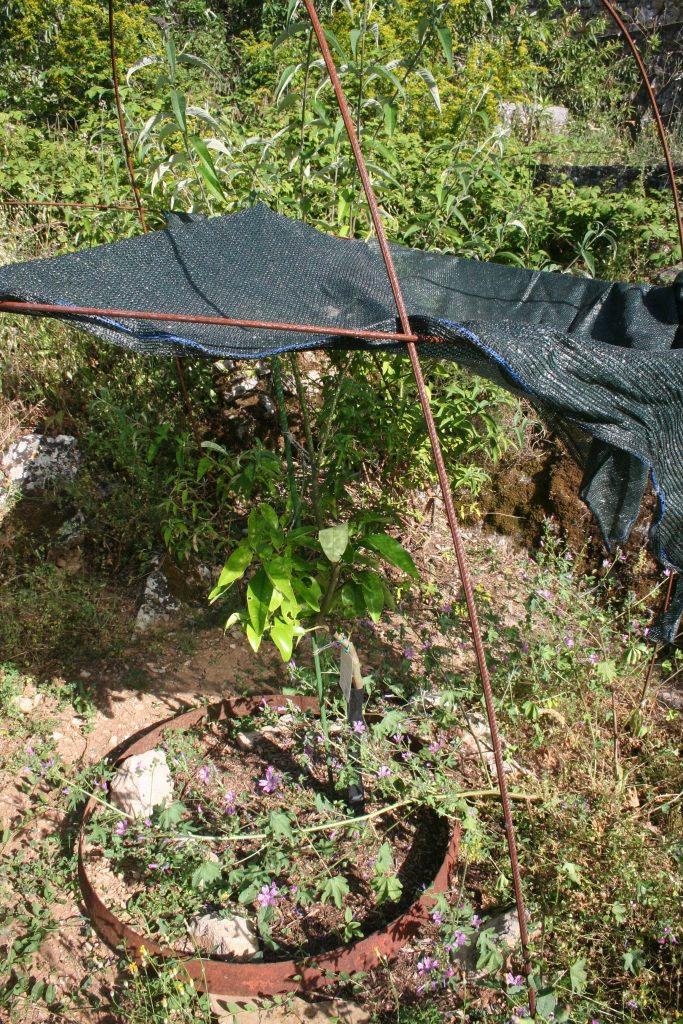
There are hundreds of varieties of citrus. Oranges and lemons are the most common, followed by grapefruit and limes, but what about a Bergamot?
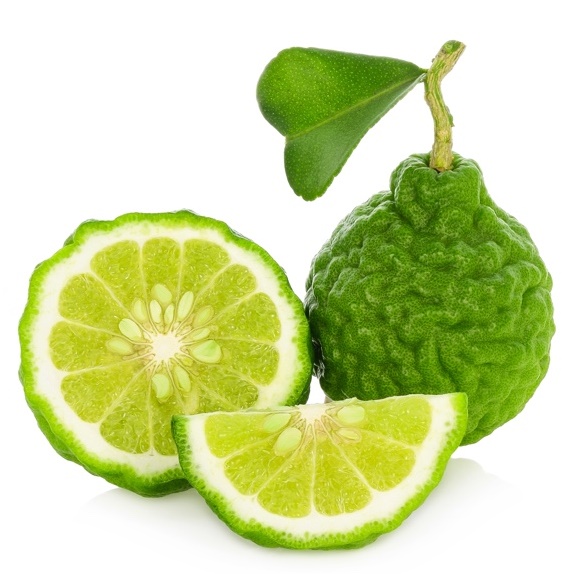
Wikipedia lists 51 varieties of citrus grown for their fruit but there are others in the citrus family which don’t produce edible fruits.
I have ten varieties of fruiting citrus, each of which has slightly different growing requirements. The most productive by far are the mandarins, but the other trees are as yet still small.
Meanwhile, I will keep a careful eye on my grapefruit sapling.
Creating a bit of a stink
There are a lot of big and beautiful plants that originate in the Mediterranean basin and I am trying to encourage some of the more unusual ones to flourish.
There is a balance between having garden plants from the areas of the world which share the Mediterranean climate – central Chile, coastal Southern California, the Western Cape of South Africa, Southwestern Australia – and making sure that local plants are not forgotten.
Walk up into the forest behind my home and for most of the year you can see different wild plants, from orchids and tiny cyclamen, to huge strawberry trees, which have all found their ideal niche and flourish on the neglected terraces which were once filled with olives, lavender, grapes and rosemary.
But you can have too much of a good thing. I have a single example of a Dracunculus vulgaris, the Dragon Arum and I have to say I would not want too many. I knew it had come into flower because I could smell it. It stinks!
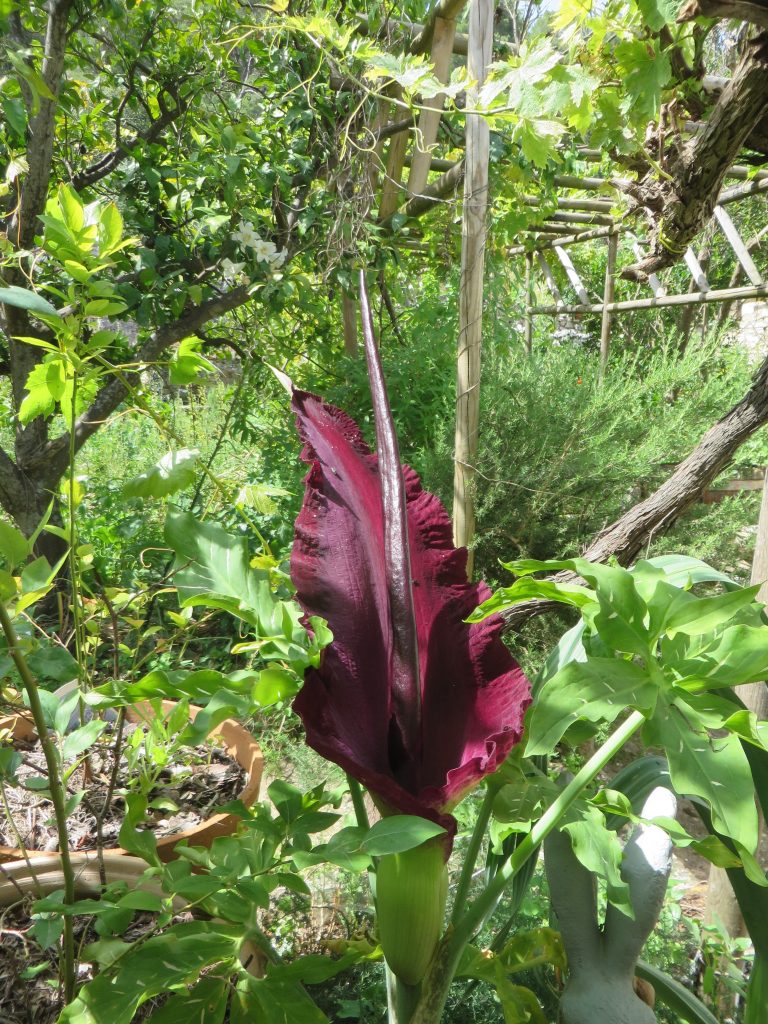
The flower is typical of the Arum lilys, with a central spathe and a surrounding cowl, but the Dragon Arum inflorescence is a deep purple colour, almost black in places, is 40 cm long and emits a strong smell of rotting meat.

This attracts a myriad of flies which are its pollinators. It traps them, until they have performed the pollination, then it releases them. Old legend has it that it eats insects, but this is untrue.
The Flowers of Chania (crete) website has considerable details about this unusual plant which is native to the eastern Mediterranean.
Something which most people will have in a jar in the pantry is Capers, but did you know you are eating the flower bud of Capparis spinosa?
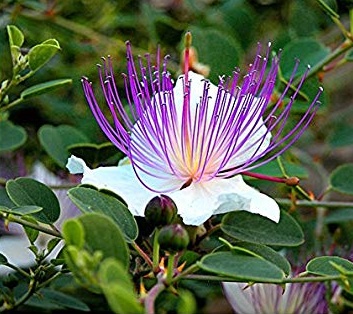
There is also the Three Leaved Toadflax, Linaria triphylla, whose distinctive flower is one I would like to encourage more of.
Although I complain about the poor quality of the soil and the sheer number of stones that are continually brought to the surface, many of these interesting plants only grow in these conditions.
The Pomegranate trees, Punica granatum, are in full flower at the moment, their flame red flowers covering the trees.
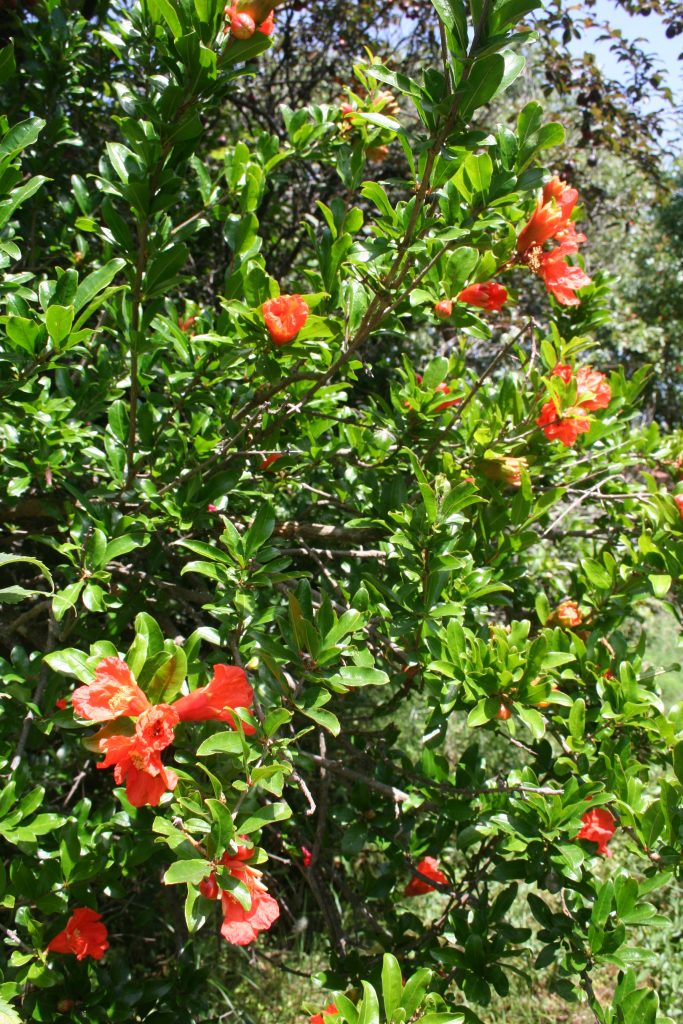
Considering last year there were none, because of the late cold spell we had, this year there will be a bumper crop.

Whilst it would be nice to have something of the RHS Harlow Car gardens here in Dol, I have to tame my ambition and create a local biome which is in tune with the local environment. A botanical garden would be a nice, but I will settle for things I can get hold of and are easy to grow.
I would like to try a Jacaranda, a tree I had in my garden in Spain which is covered in large mauve flowers in Spring.

I also like the Flamboyant Tree, Delonix regia, which grows well just down the road in Jelsa. I even have some seeds. I just need to plant them… NRC

4 Responses
carole hodgson
Loved pictures of cats and gorgeous flowers.
D C Williams
Love all the flowers Norman .
We have just laid a new patio so something nice sit on for the summer.
Rick
Greetings from, now hot, Northern Arizona,
Have you tried planting mint: Note. it can be invasive but is a great ground cover. Grows well in AZ
Scientific classification e
Kingdom: Plantae
Clade: Angiosperms
Clade: Eudicots
Clade: Asterids
Order: Lamiales
Family: Lamiaceae
Subfamily: Nepetoideae
Tribe: Mentheae
Genus: Mentha
NRC
Thanks Rick,
Yes, I have Mint, three different types, Chocolate Mint, Mentha x piperita ‘Chocolate’; Catmint Nepeta mussinii; and Roman mint, Mentha suaveolens .
Many herbs originate in the Mediterranean basin and were taken by the Romans with them as their empire spread, so they grow well and need to be contained!